SWITZERLAND.



4 SEASONS
jSPRING
March – May

Flowers bloom and birds sing. An ideal time for city breaks.
kSUMMER
June–August
The country’s lakes and mountain regions offer a place to cool off.
lAUTUMN
September – November
Take a walk through the riotous colours of the trees and enjoy the summer’s harvest.
mWINTER
December – February
Fun in the snow and downtime by the fire.
German-speaking Switzerland
Grated potato, fried until golden and crispy.
Ticino
A stiff paste made from maize flour, traditionally cooked over a wood fire.
French-speaking Switzerland
Hearty, well-seasoned pork sausage.
Romansh culture in Switzerland
Spätzle pasta and salsiz sausage, gently wrapped in chard leaves and prepared in various ways.
4 LANGUAGES
There are four official national languages.
“Hello” in:
Swiss German (63.5 %)
Grüezi
French (22.5 %)
Salut
Italian (8.1 %)
Ciao
Romansh (0.5 %)
40% groundwater
40% spring water
20% lake water
Switzerland has the densest transport network in the world, with 29,000km of road, rail and water links.
Switzerland has 13 UNESCO World Heritage sites spread across all its regions, in the mountains and in the cities.
Mild, with moderate heat, cold and humidity.
July–August
ø 18 to 28° C
Max. 42° C, Grono GR
High peaks and vast land scapes: the photo spots reveal the most beautiful views along the Grand Tour.
One country, four languages, 26 cantons. Switzerland is my home. I love its diversity, its vast landscapes, enchanted valleys, proud mountains, rugged grasslands, delightful moors, crystal-clear lakes, bubbling brooks and tranquil rivers. Switzerland is a destination that merits not just visiting, but also touring around. Delve into the differences and peculiarities of its individual regions and areas, and each time take with you a piece of the mosaic that is Switzerland.



The Grand Train Tour of Switzerland is 1,280km in length. It connects not only the different parts of the country but also its most beautiful panoramic routes, combining them into a single journey. Switzerland has the densest rail network in the world, making trains a convenient and easy way to travel. There is no set direction for the Grand Train Tour, and if you are tempted to linger longer somewhere you can break your journey at any time.


650 road signs point the way clockwise, leading over passes, past lakes and through spectacular scenery. The Grand Tour of Switzerland is over 1,640 km long and runs right through Switzerland. Select a stage and the trip becomes a road movie, with a scenic or cultural highlight awaiting you around almost every corner.
Safe travels!
Roger FedererStarting on page 6, discover three suggested routes for the Grand Train Tour of Switzerland.


A

B
CONNECTING ROUTES WORTH SEEING
D Basel Geneva
From Geneva or Basel airport, travel through the Three-Lakes region and alongside Lake Geneva, depending on your direction.
1
2 ¾h / 131km
Zurich Lucerne Interlaken
Mountain panoramas, turquoise lakes and countless waterfalls – on this route you’ll wish the trip would take a little longer.
Train: Lucerne–Interlaken Express Reservation: recommended
Catering: à la carte bistro
3
2 ½h / 148km
Montreux Visp Zermatt
From dazzling Montreux on Lake Geneva, the train travels up to the Matterhorn, the mountain of mountains.
Train: Matterhorn Gotthard Bahn Reservation: not necessary Catering: none
5
6 ¾h / 154km
St. Moritz Tirano Lugano
Dive into glaciers and mountain lakes, take a quick breath of fresh air among the palm trees in the Valposchiavo, then resurface at Lake Lugano.
Train: Bernina Express Reservation: required Catering: snacks and drinks
7
2 ¼h / 125km
Lucerne St. Gallen
Discover the east of the country via rolling hills and over Switzerland’s highest railway bridge.
Train: Voralpen-Express Reservation: possible Catering: vending machines for snacks, cold drinks and coffees
2 3 ¼h / 120km
Interlaken Montreux
Pass grazing cows and majestic castles until the expanse of Lake Geneva fills the view from the window.
Train: GoldenPass Express Reservation: required for Prestige class, recommended for 1st/2nd class
Catering: drinks and specialities
4 7 ¾h / 291km
Zermatt St. Moritz
The slowest express train passes through 91 tunnels and over 291 bridges.

Train: Glacier Express Reservation: required
Catering: lunch / Excellence class: six-course menu incl. drinks
6 5 ½h / 182km

Lugano Bellinzona Flüelen Lucerne
The scenic ride is interrupted only by the Gotthard massif, before you chug by boat across Lake Lucerne.
Train: Gotthard Panorama Express (or Treno Gottardo without res.) Reservation: required
Catering: snacks
8 2 ½h / 133km
St. Gallen Schaffhausen Zurich
Travel alongside vast Lake Constance, see the Rhine Falls, one of the largest waterfalls in Europe, ending up in the vibrant city of Zurich.
Train: Thurbo Reservation: not possible
Catering: none
This route is a treat not just for the eyes but for train enthusiasts too: three different express trains take passengers from Montreux with views over vineyards and Lake Geneva towards the Bernese Oberland and its imposing peaks. From Lucerne, the train rolls through picture-postcard scenery to culturally rich St. Gallen.
ITrain
GoldenPass Express
Lucerne–Interlaken Express
Voralpen-Express

Famous music
Freddie Mercury stands on the shores of Montreux, where Queen recorded 9 albums.
Duration of train journey
Suggested trip
7h 22min 2 – 5 days
To discover on this train journey:
Lakes
From little Lac du Vernex to vast Lake Constance, the route takes in a total of 11 lakes.
Nature parks
The train passes through 2 of the 20 Swiss Parks on this route.
Grand Train Tour
Discover all the stages.
Pass Brünig Pass at over 1,000m a.s.l.
Highest bridge Sitter Viaduct at 99m.
This route comprises stages 1, 2 and 7 of the Grand Train Tour.

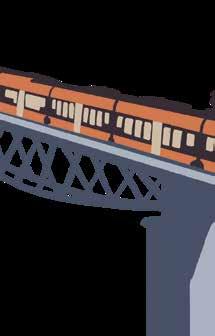

LAVAUX
Olympic Museum
Lavaux
Gstaad
Start: MONTREUX
Vineyards and the lake form an enchantingly beautiful landscape. UNESCO World Heritage
ST. GALLEN

ABBEY LIBRARY 15
The 8th-century Abbey Library is one of the largest and oldest in the world.
CHAPEL BRIDGE 9
Lucerne’s most famous landmark is the second-longest covered wooden bridge in Europe. Its gable roof is adorned with 45 paintings.
JUNGFRAUJOCH 7
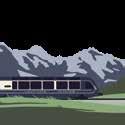
Europe’s highest railway station, at 3,454m a.s.l.

Finish: ST. GALLEN

Vaud / Bernese Oberland
Green vineyards and snowy mountains: on this stage seemingly contrasting aspects come together to form a picture of their very own.
Montreux carries the sound of the wide world in its name, with a jazz festival that even has its own rock anthem by Deep Purple.

“Smoke on the Water” was written in 1971 after a fire broke out at a Frank Zappa concert and smoke spread across Lake Geneva.


Perched atop a rocky island on the shores of Lake Geneva sits Chillon Castle, not far from Montreux. The imposing medieval castle is surrounded by water, and its walls tell stories of festivities, conquests and famous poets.
The Olympic Games have a very long history, and this is reflected in the Olympic Museum in Lausanne. It is the world’s largest centre of information about the Games.
“I was travelling this route with a friend. We took in some truly fantastic views along the way.”
There are actually two sides to Gstaad. It is simultaneously a cosy village full of pretty chalets and a cosmopolitan luxury resort, home to the world-famous fivestar Palace Hotel, which has always attracted international jet-setters.
More tips for Gstaad on p. 50
Zweisimmen has more of a village feel than Gstaad. In summer the village is the starting point for countless hikes, while in winter it is a paradise for all lovers of snow sports. Train enthusiasts will love it here, as the station’s gauge changing facility allows you to travel between Vaud and the Bernese Oberland without changing trains.
IThe historic GoldenPass Belle Epoque runs daily between Montreux and Zweisimmen.


The terraced vineyards of Lavaux are an impressive cultural landscape. The area is a UNESCO World Cultural Heritage site.
MONTREUX INTERLAKEN
Between Lake Thun and Lake Brienz lies Interlaken – a place where people generally stroll around with their heads craned upwards. Not that Interlaken itself isn’t beautiful, but the views of the Eiger, Mönch and Jungfrau are simply too spectacular.
r Small theatre in the Stadtkeller Unterseen
p Restaurant Stadthaus
n Victoria Jungfrau Grand Hotel & Spa
The three striking peaks in the Bernese Oberland are usually mentioned in the same breath: the Eiger, Mönch and Jungfrau. After a ride on the historic Schynige Platte Railway, a magnificent panorama and a wealth of alpine flora await high above Interlaken.

Central Switzerland
The Brünig Pass connects the Haslital valley in the Bernese Oberland with Central Switzerland. Due to the gradient, part of the route is operated in cogwheel drive.
Urban flair or imposing mountain panoramas? World-class culture or fun at the lake? In Lucerne you don’t have to choose: the beautiful, historic old town borders Lake Lucerne, the “dragon mountain” Pilatus rises in the background, and in between the Culture and Congress Centre hosts musicians and artists from all over the world.
p Restaurant Old Swiss House
Hotel
In the 19th century, people actually wanted to demolish the Chapel Bridge. Fortunately they decided not to, because it is now one of Lucerne’s most famous landmarks. The impressive pictures beneath the roof are an ode to the right way of living.

Steam railway
It stamps and steams, it squeals and smokes: the Brienz Rothorn Railway is Switzerland’s only cog railway with daily steam operation, dating back to 1892.

Eastern Switzerland
Hilly landscapes that adorn the horizon with rocky silhouettes. They are as much a part of Eastern Switzerland as the deep blue Lake Constance.

The largest continuous upland moor in Switzerland is the first to be placed under protection. Above all, however, the Rothenthurm upland moor is just incredibly beautiful – a poem in the landscape and habitat for countless plants and animals.
Around Biberbrugg
Einsiedeln 11
Einsiedeln lies at the heart of the pretty landscape. The village is best known for its baroque abbey complex with the Black Madonna. It is one of Europe’s most important places of pilgrimage.

Kloster Einsiedeln
First came the castle, then the town. Rapperswil Castle sits proudly above Lake Zurich. In the Middle Ages, it was used to guard the waterway from Zurich to the passes of Graubünden and Einsiedeln Abbey. A town eventually grew up below the castle: Rapperswil.
Rapperswil-Jona

The view from its summit takes in six countries: Switzerland, Germany, Austria, Liechtenstein, France and Italy. But the far distance isn’t actually relevant at this moment – ideally you would stay on the mountain and in the moment forever. At 2,501m a.s.l., Säntis is the highest mountain in the Alpstein.


Around 612 AD, the wandering Irish monk Gallus came to what is now Eastern Switzerland and founded a monastery – the basis for what would later become St. Gallen. In the Middle Ages it was one of Europe’s most important centres for culture and education. The charming and cosy old town has preserved its medieval character to this day.
“Apothecary for the soul” is written in Greek above the entrance to St. Gallen’s Abbey Library. It is the oldest library in Switzerland, guarding untold cultural riches, and part of a UNESCO World Cultural Heritage site.

The train journey runs right across Switzerland from north to south, through the Swiss Plateau and on to Central Switzerland; you then take a boat across Lake Lucerne before boarding the Gotthard Panorama Express, which winds its way up to Göschenen, where it disappears into the Gotthard massif before re-emerging in Ticino, southern Switzerland.
ITrain Thurbo

InterRegio Gotthard Panorama Express (Apr–Oct) or Treno Gottardo (year-round)

Duration of train journey
Suggested trip
6h 12min including boat trip 1 – 3 days

To discover on this train journey:
Switzerland’s oldest cog railway
Vitznau-Rigi Railway, built in 1871.
Longest tunnel
The 57-km Gotthard Base Tunnel is the longest in the world. However, the route passes through the 15-km tunnel built in 1880.
Famous church See
church in front of the Gotthard from three different angles.


ZURICH 5

Home to Switzerland’s largest fleet of ships.

With its lake, rivers and 1,200 fountains, the city offers refreshment at every turn.
BELLINZONA 15
The city exudes the grandeur of the South, while the castles tell captivating tales.


SCHAFFHAUSEN
38 min
Schaffhauserland
There among the vineyards and dense forests, where the Rhine meets the green meadows, lies Schaffhauserland.

The Rhine flows in leisurely style through Schaffhausen, and it is pleasant to stroll the streets of the medieval town – perhaps to the Munot fortress, the city’s proud landmark. And for urban flaneurs who share Sherlock Holmes’ keen eye, the old town contains a total of 171 oriel windows. By seeking them, you can simultaneously embark on an exciting tour of the city.
ZURICH
i Regional Nature Park Schaffhausen p Wirtschaft zur Beckenburg
Around Schaffhausen
Rhine Falls 2

One of Europe’s biggest waterfalls and a truly imposing sight. Even more so when you look down into the thundering, foaming waters from the viewing platform and feel tiny.
Rheinfall
Stein am Rhein 3
This medieval town on Lake Constance is well worth a trip. Colourfully painted oriel windows and house façades, small alleyways, a labyrinthine old town – stroll through its attractive heart and travel back through time.
4
A full 457m long and 50m high, the railway bridge that crosses the Rhine in Eglisau is an impressive sight. It was built in the late 1890s. Given its significance for structural engineering, it is a cultural heritage site of regional importance.
On the Neuhausen–Rafz route, the train briefly crosses into Germany and the Schaffhausen Regional Nature Park, Switzerland’s first cross-border park.
Zurich Region
All around Lake Zurich, one’s gaze wanders into the distance, lingering on the snow-covered mountains on the horizon.
Zurich is many things. A city that wears its stories with pride and dignity, like a string of pearls. At the same time, it celebrates urban lifestyle in its diverse districts. Zurich is Switzerland’s largest city, with vibrancy and flair in its DNA.


National Museum and green park right by the water
The fact that Zurich is also known as the “Limmatstadt” says it all. The river that flows through “its” city feeds the Zurich way of life. It flourishes in the riverside cafés and bistros‚ in the city’s public baths, on the footpaths by the water’s edge and on the agile Limmat river cruisers.
Zug, beautifully situated on the lake sharing its name, has no need to hide behind its reputation as a centre for finance and trade. It also has a cosy old town, with stylish boutiques, inviting pavement cafés and fine restaurants.
You can drink from almost all public fountains in Switzerland. Zurich has more fountains – over 1,200 – than any other city in the world.

SCHAFFHAUSEN ZURICH
Central Switzerland is also referred to as the “heart of Switzerland”. And that’s not just for geographical reasons, but also because of the unspoiled landscape.
On a boat trip across Lake Lucerne, where the shores are steeped in legend, the lake unfolds its enchanting beauty.

It is also special to nautical enthusiasts, as it is home to Switzerland’s largest fleet of historical and modern ships.
More tips for Lucerne on p. 11
The Hammetschwand Lift was opened in 1905 to take tourists up to the viewpoint above Lake Lucerne. It is the country’s highest freestanding outdoor lift.
It is considered the Queen of the Mountains, and rightly so. The view from its summit was already worldfamous back in the 19th century, attracting many travellers. Today, visitors who ride up to the Rigi from Vitznau on the nostalgic Art Nouveau train are fully immersed in the splendour of this era.
FLÜELEN LUCERNE
2h 43min
When the foehn wind rushes down from the mountains over the valley, spreading its pleasant warmth, Lake Uri foams and dances with white waves between the high rocks. Kiters and sailors find a unique paradise that brings an ocean feel to the mountains.

Around Flüelen
Reuss Delta 12
The Reuss Delta, on the Swiss Path between Flüelen and Seedorf, is a real natural gem. Rare plants grow in this nature reserve by the lake, and it is home to countless animal species.

The story of the fearless freedom fighter continues to fascinate people to this day. Many visit the tale’s locations around Lake Lucerne, where the legend comes to life. The village square in Altdorf, for example, is where legend says that William Tell had to shoot an apple from his son’s head with a crossbow.
LUGANO
SCHAFFHAUSEN ZURICH
Palm trees stretch up to the intensely blue sky, a mountain backdrop in the distance. In Ticino, Switzerland shows off its southern side.
For a long time, the Gotthard massif was the border between north and south. Via mule trails, the pass eventually became a link. Today, trains roar through the world’s longest rail tunnel in around 20 minutes. The enchantment of the journey on the old mountain route remains unbroken, however.

Richly decorated patrician houses, medieval charm: a stroll through Bellinzona has the flair of a Lombard city of culture. Bellinzona is also an urban meeting place, however. On Saturdays the old town hosts a large weekly market – one of the most beautiful in Switzerland.
The fortified complex of Castelgrande, Castello di Montebello, Castello di Sasso Corbaro and impressive Murata is a UNESCO World Cultural Heritage site. From the 15th century, Bellinzona used these to control access to the Gotthard, Lukmanier and San Bernardino passes.

Nestled in a bay on the northern shore of Lake Lugano, Lugano lies between the mountain destinations of Monte San Salvatore and Monte Brè. Its Mediterraneanstyle buildings, narrow old town streets and subtropical vegetation give Lugano a special flair. The city is an architectural and cultural gem.
The former fishing village of Gandria has an idyllic location on the shore of Lake Lugano, enclosed by a flank of Monte Brè, which is covered in a tangle of sweet chestnut trees. It is also home to the Swiss Customs Museum.
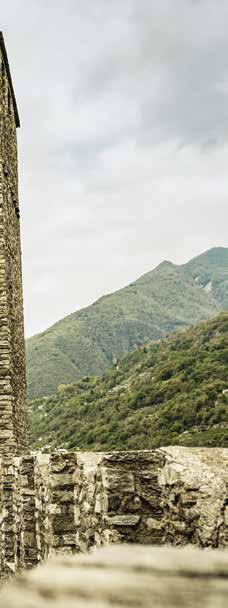
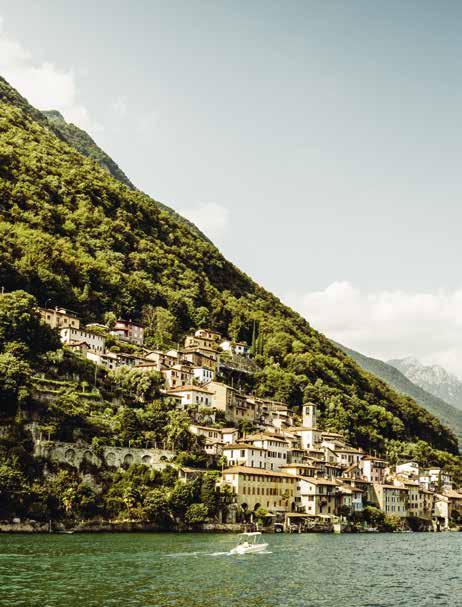
The Glacier Express connects the world-famous winter sports resorts of St. Moritz and Zermatt. With views of the UNESCO World Heritage route on the Albula Pass, imposing mountains and architectural marvels, after eight hours on the “slowest express train in the world” you’ll feel like you’ve had a week’s holiday in the mountains.
ITrain Glacier Express õ Excellence class: drinks at the bar and a six-course menu at a window seat
First time Maiden journey St. Moritz–Zermatt on 25 June 1930.
Duration of train journey
Suggested trip
8h 20min
2 – 4 days

To discover on this train journey:
Longest tunnel on the route
Furka Base Tunnel, 15.4km.
Numerous bridges
The Landwasser Viaduct is just one of the 291 bridges on the route.
Grand Train Tour
Discover all the stages.
Highest point Oberalp Pass at 2,033m a.s.l.
This winter route is stage 4 of the Grand Train Tour.


; Alighting from the Glacier Express along the route is possible, but the journey from then on would then have to be by regional train
MATTERHORN 14
The perfectly shaped mountain is one of the most famous in the world and towers over the highest ski area in the Alps.
Gstaad
Finish: ZERMATT



St. Moritz
The birthplace of winter tourism in the 19th century. Once a year, horses even gallop across the frozen lake.
In the heart of the magnificent Upper Engadin mountains, the international high society meets with much glitz and glamour for winter sports, evenings with friends and family in the best gourmet restaurants or top-class events in the powder snow.
Engadin St. Moritz
240km of cross-country ski trails
88 ski slopes
m 70 art galleries in the Engadin

p Restorant Lej da Staz
n Badrutt’s Palace
Passengers traversing the Bernina Pass on the UNESCO World Heritage Railway, one of Switzerland’s most beautiful train routes, can’t help but be amazed. When Lago Bianco at Ospizio Bernina freezes over, fish can appear to swim through the clouds.

An animal-watching excursion to Central Europe’s oldest national park is an exciting experience. The alpine wilderness is home to bears, ibex, deer, bearded vultures and marmots. It is especially beautiful in autumn, when the larches turn gold.
:Language diversity Romansh, one of Switzerland’s four national languages, is spoken in Graubünden. It in turn is divided into five different regional dialects.
Graubünden
Switzerland’s largest canton – home to Heidi and “A Bell for Ursli” – has breathtaking mountains and villages so pretty you’ll never want to leave.

The colours of the Engadin are so beautiful that your heart almost bursts and you are left speechless. Famous author Hermann Hesse did manage to find some words. He also fell for the beauty of the Engadin and captured it in his writing.

Bergün is a traditional old settlement with many historic houses lining the pass road, proudly showing off their fine decorations. Travellers once stopped here on their way to the Engadin to gather strength before the last long push over the Albula Pass.
This is the symbol of the Rhaetian Railway and centrepiece of the Albula Railway, a UNESCO World Cultural Heritage site. The imposing 65-m-high Landwasser Viaduct is an incredible feat of early 20th-century engineering that still fascinates people today.


7km3 of rock, rubble and debris crashed down into the valley and buried the Vorderrhein river. Then came the lake, formed by water backing up 25km along the valley. This all happened almost 10,000 years ago, in an event known as the Flims landslide. The water carved a path through the rock until the lake drained away, leaving behind the Rhine Gorge, which is up to 350m deep in places.

At the far end of the Vorderrheintal valley, where the Lukmanier and Oberalp passes meet, lies the Benedictine Disentis Abbey. The baroque abbey complex, which towers over the village, is now particularly impressive. The abbey was originally founded around 700 AD by the Frankish monk Sigisbert.

ST. MORITZ

The Gotthard is chiefly known for its train connection between north and south. However, the region itself is also worth exploring.

Where the cantons of Uri, Graubünden and Ticino meet, surrounded by eight alpine passes, lies Andermatt, right in the middle of this cultural diversity. It is a magical place, with numerous side valleys, rugged nature and pretty mountain lakes, connected by some 500km of hiking trails.
m Snowshoe tour Hospental–Mittleregg
The Chedi: The Restaurant
The River House Boutique Hotel
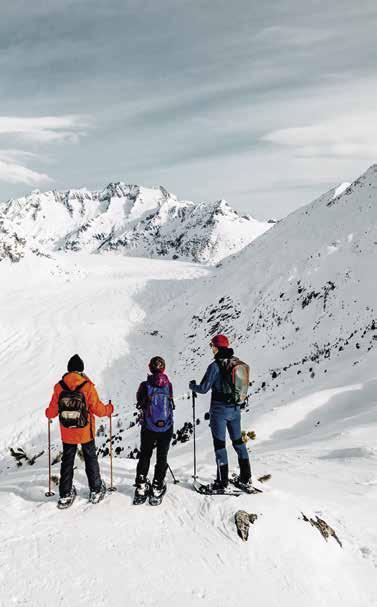
The sea begins at the Oberalp Pass – at least symbolically. For Lake Toma, at the heart of a mountain landscape sculpted by glaciers, is the source of the Rhine, one of Europe’s longest rivers, which over 1,200km later flows into the North Sea.
At 22.6km long, the Aletsch Glacier is the longest glacier in the Alps and the largest by area. A fragile beauty that makes it clear just how much we need to protect it. The area around the Aletsch Glacier is a UNESCO World Natural Heritage site.

A devilish tale
In the 16th century, so the legend goes, the devil helped the people of Uri build the first bridge over the dreaded Schöllenen Gorge.
Valais

The mountains in Valais stretch far into the sky. They are connected by enchanting valleys filled with pretty villages.

At the foot of the Matterhorn lies Zermatt. With its chalets tanned by the sun, the village has become the epitome of a mountain idyll and, thanks to its location and 360km of ski slopes, a hotspot for mountaineers. The village has always been car-free.
Gornergrat, Matterhorn
Ski tour up to one of the 38 Alpine giants
p
Restaurant Cervo Kitchen
Beausite Zermatt

These sheep have black noses, ears, kneecaps, ankles and feet but are otherwise white. And very fleecy. They go “baa” and those who see them say “yay”. Blacknose sheep are the traditional breed reared in Valais.
The Matterhorn – the mountain of mountains – is perhaps shared in photographs or taken home as a souvenir more often than any other emblem of Switzerland. With the perfect shape, it is as famous as the Beatles and as intrinsically Swiss as milk and cheese.

They are as much part of Valais as the Matterhorn. Both have a centuries-old tradition. A third of Swiss wines are produced in the region.
MySwitzerland.com/ grandtraintour

Available here: App Store | Google Play
Choose from 8 stages covering a total of 1,280km of track.
Exciting additional information on all sights at a glance.
Savings, discounts and free surprises for excursions en route.
U
1st class
Carriages in 1st class offer greater comfort than 2nd class, with wider seats and more legroom. There are also quiet compartments in 1st class.
You also have a choice of 1st or 2nd class on board Swiss boats. 1st class is generally located on the upper deck, with views guaranteed.
A souvenir that will long remind visitors of their tour: the “myGrandTrainTour” booklet allows you to collect nine unique stamps at different destinations along the Grand Train Tour.
The booklet is available free of charge at Basel, Geneva and Zurich railway stations, Geneva and Zurich airports and many tourist offices along the route.
MySwitzerland.com/ MyGTTbooklet
The Rhaetian Railway gets 100% of the energy for its passenger trains from hydroelectric power.
27
A railway journey produces 27 times less CO2 than a similar journey by car.
17
Of the 30 cog railways left in the world, 17 are in Switzerland.
SBB app
Buy tickets and find the right timetable with the SBB app. sbb.ch/en/timetable
Organise nothing, just rely on the professionals and enjoy the trip to the fullest –these tour offers make that possible:
Original
All panoramic trains, all highlights, all four languages: the Original tour can last eight days or more.
Classic
Experience seven days of picturesque towns and thrilling mountain excursions.
Travel through Switzerland in five days, taking in the top sights.
Glaciers & Palm Trees
From adventures in the high Alps to the Mediterranean south in four days.
Stunning Waters
Lakes, rivers, springs and waterfalls: spend three days immersed in the diversity of Switzerland’s water.
Hidden Treasures
Three-day breaks: urban charm, hilly landscapes and Ticino grottos.
The relaxed way to travel without the hassle of luggage: let the luggage service transport your bags from station to station or even door to door. sbb.ch/en/luggage
Winter Magic
Glaciers, powder snow and magical ice fields: chug through the snowy countryside over eight days or more.
Information and booking: MySwitzerland.com/ traintour-packages
The trains of the Gornergrat Railway are equipped with what is known as a recuperation brake, which converts kinetic energy into electrical energy.
The energy recovered on three descents is enough for around two ascents.
B
Stans Stanserhorn
Stanserhorn cable car
Nostalgia and a world first Passengers travel as far as the middle station in traditional wooden cars, just like they did almost 130 years ago. Afterwards, they take a seat on the open upper deck of the CabriO.
Fribourg centre old town “Funi”
The “Funi” is the last water ballast funicular in Switzerland. This nostalgic funicular has been in operation in Fribourg since 1899. Rather than being powered by an engine, it runs on filtered wastewater from the upper town.
0.2 %
Rail travel accounts for just 0.2% of the total carbon emissions produced by transport.
Switzerland has the densest transport network in the world, with 29,000km of rail, road and water links.
80 %
Train platforms in Switzerland will comprise 80% recycled materials in the future.
The Swiss Travel Pass gives you unlimited travel on Switzerland’s entire rail, bus and ship network. Great views are a given. MySwitzerland.com/ swisstravelpass
The CabriO cable car is powered by solar energy and was awarded the Solar Prize in 2015. E Interlaken Electric
The “Funi” operates without electricity or exhaust emissions.
The motor ship Diamant sets standards as the first climate-neutral cruise ship in Switzerland, operating with a hybrid drive that lowers fuel consumption and carbon emissions.
The Diamant uses 20% less energy than normal liners.
To charge the battery, PostBus AG uses exclusively renewable energy for its electric bus in Interlaken and the surrounding area, drawing on natural resources such as local hydropower.
By 2040, all PostBus vehicles are to run fossil-free.
From the most beautiful mountain peaks to romantic boat crossings – public transport couldn’t be more convenient.
Various route offerings: the Grand Train Tour, panoramic train routes, themed routes and much more.
Discover the great variety of public transport in Switzerland:


Starting on page 38, discover two suggested routes on the Grand Tour of Switzerland.
ACCESS ROUTES WORTH SEEING

1 175km / 5 highlights
Zurich Appenzell
From the big-city hustle and bustle of Zurich to one of Europe’s largest waterfalls and on to the historic book and textile city of St. Gallen. From there, it’s not much further to rural Appenzell with its green hills and richly painted houses.
3 221km / 6 highlights
St. Moritz Lugano
It’s downhill, not uphill, at a leisurely pace from alpine St. Moritz at 1,822m a.s.l. to palm-lined Lugano at around 270m a.s.l. In between lies San Bernardino, where 19th-century road building skills still impress today.
5 178km / 6 highlights
Zermatt Lausanne
The message here is “All change” –besides the Matterhorn, Zermatt is known for being car-free. The train takes visitors from the car park in Täsch to Zermatt and back. The tour then continues by car to Lake Geneva and its extensive vineyards.
7 252km / 8 highlights
Neuchâtel Bern
“Always by the water” could be the motto of this route, running from Lake Neuchâtel to Lake Murten, Lake Schiffenen and Lake Gruyère to Lake Thun. Travellers then roll along beside the Aare river to the capital city, Bern, whose old town is a UNESCO World Cultural Heritage site.
2 200km / 8 highlights
Appenzell St. Moritz
A journey through worlds: from Werdenberg, the smallest town in Europe, to the Bündner Herrschaft –home to the literary character Heidi and Europe’s oldest recorded vineyard –and on until the wheels stop rolling in extravagant St. Moritz.
4 298km / 6 highlights
Lugano Zermatt
Paved with granite cobblestones, the Tremola snakes its way from Airolo up to the Gotthard Pass. In the most spectacular section, it climbs 300m in just 4km via 24 hairpin bends. A little later, the Furka Pass offers another lookout point: the highest pass on the Grand Tour.
6 170km / 2 highlights
To begin with, watch production was mainly concentrated in Geneva. Watchmaking soon spread across the Jura mountain range to other regions such as Le Sentier and Neuchâtel. This route leads into the history of watches, but also up to the Creux du Van natural rock arena, Switzerland’s Grand Canyon.

8 315km / 9 highlights
The journey itself is the reward, because while it would be easy to choose a fast route from Bern to Zurich, you would miss out on a lot. That includes Hallwyl moated castle and the Rütli meadow, where the oath marking the alliance of the original cantons was sworn in 1291.
Switzerland’s two international cities are connected. While more than 100 international organisations give Geneva its multicultural flavour, Basel’s museums provide cultural diversity. In between are the vast, wild landscapes of the Jura and the time that tells a very different story.
CKey info

The section from Neuchâtel to Basel is only signposted in the opposite direction. Use the Grand Tour app.
Le Corbusier
The architect grew up in La Chaux-deFonds. Two of his works are UNESCO World Heritage sites.

Length 348km 3 – 5 days
Suggested trip
To discover on this road trip:
The Freiberger
The only breed of horse native to Switzerland comes from the Jura.

The border river
For 43.8km, the Doubs river forms the border with France.
Grand Tour
Discover all the stages.
Highest point in the Jura Chasseral mountain at 1,607m a.s.l.
This route comprises stages 6, B and C of the Grand Tour.
UNESCO World Heritage
They are as much a part of Basel as their operators, the “Fährimaa”, using the power of the current to link Kleinbasel and Grossbasel.

Saint-George
Switzerland’s Grand Canyon, where nature has drawn vertical cliffs arching into the land.
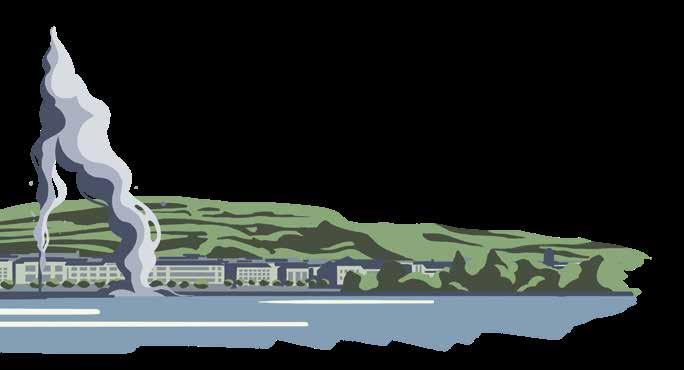
From the hustle and bustle of an international metropolis to the nature of the Vaud Jura with its impressive rock formations and caves.
The city is home to organisations such as the UN, the WHO and the ICRC. Only New York hosts more international organisations –Geneva is an urban window on the big, wide world. Geneva’s landmark, however, is a tower made of water: the Jet d’eau, a king that rises in front of the imposing lake basin with views of the snowy mountains. It is 140m high and shoots 500l per second into the air.
International Watch Museum
Restaurant Chez Philippe
Hotel Bristol Geneva

Up to the summit of La Dôle and down to the medieval village of Romainmôtier. Some 520km of hiking trails lead through the Jura Vaudois Nature Park with its secluded forests, mystical moors and meadow landscapes surrounded by drystone walls.
Water sports in summer, ice skating and cross-country skiing in winter: the Lac de Joux is the largest lake in the Jura massif and worth a trip at any time of year.
The Vallorbe cave system was created over millions of years by the Orbe river, forming the largest stalactite caves in Switzerland. The lighting illuminates the natural beauty of the stalactites, stalagmites and limestone columns.
The valley is dominated by the watch industry, while also offering wild nature with vast fir forests, the Jura hills and nature reserves. However, the Val de Travers is best known for its “Green Fairy”: absinthe, which was banned for over 90 years until 2005.
Hiking over meadows alongside steep vertical rock faces formed by glaciers and streams, you will be reminded of the Grand Canyon in the USA. The Creux du Van natural rock amphitheatre offers spectacular views of the Alps and as far as France.

Around 1870 Switzerland produced some three-quarters of all the world’s watches; today the figure is 2%. But the fascination with mechanical timepieces has remained – especially in the Jura.





From the wilderness of the gentle Jura hills, the journey continues towards Basel – the urban pearl where three countries meet.


The castle is perched high above the medieval city on Lake Neuchâtel and gives it a very s pecial atmosphere. It was built using pierre jaune, a yellow limestone that also gives many houses in the old town their yellow hue.
Laténium pile dwellings museum
Restaurant
La Maison du Prussien
Hotel Beau-Rivage
La Chaux-de-Fonds is the beating heart of the Swiss watch industry. The town is a bastion of this old craft, a UNESCO World Heritage site and home to the International Clock Museum. Those interested in the work of the architect Le Corbusier can gain exciting insights at the Maison Blanche.
The landscape in this nature reserve is so uniquely magical that it would come as no surprise to see fairies dancing around the lake. The nature reserve of Étang de la Gruère covers a total area of over 120 ha.
The small town lies where the lush green forests give way to the soft blue Doubs river. According to legend, the Irish monk Ursicinus lived here as a hermit in a cave. The chapel of the Ermitage Saint-Ursanne was built in his honour. You can still visit the chapel and the cave today.
With 40 museums, Basel has the highest concentration of museums in Switzerland. One of the most beautiful is the Fondation Beyeler. It is located just outside Basel in a green park with mature trees and an idyllic pond in which you can see the reflection of Monet’s water lilies from through the museum windows. A wonderful way of saying that art is there for everyone.
Fondation Beyeler
Kunstmuseum Basel Museum Tinguely
Restaurant Atelier Der Teufelhof Basel
Hotel Krafft Basel



The route runs through Western Switzerland to Central Switzerland. While the vastness of Lake Neuchâtel slowly but surely gives way to imposing cliffs, Lake Lucerne already comes into view, fjord-like in its beauty. Surrounded by the Rigi, Pilatus and Stanserhorn, small villages such as Beckenried lie on its shores.
Key info

The ferry from Gersau to Beckenried only operates in the summer months, as does the open-top cable car up the Stanserhorn.

Switzerland’s “pyramid”
The world’s longest staircase, with 11,674 steps, leads to the top of the Niesen.
Length

Suggested trip
460 km 3 – 5 days
To discover on this road trip:
Largest lake
Lake Neuchâtel is the largest lake entirely within Switzerland.
Oldest bridge
The Chapel Bridge in Lucerne is the oldest covered bridge in Europe.
Grand Tour
Discover all the stages.
“Röstigraben”
Fribourg straddles the figurative border between German- and French-speaking Switzerland.
This route comprises parts of stages 7 and 8 of the Grand Tour.
This culinary speciality has a long tradition in the Fribourg Region.



From one lake to the next, the stage takes you over bridges to the university city of Fribourg and up through the hilly countryside to the Bernese Oberland.
More tips for Neuchâtel on p. 44
Murten can be enjoyed in a leisurely stroll along its lakeside promenade or a pleasant amble through the medieval alleyways and arcades. From the ramparts – which are almost fully preserved and the only accessible circular walls in Switzerland – the view opens up into the distance, across Lake Murten to Mont Vully and the Jura.

Just as the Saane meanders around the old town, the river is also bound up tightly with the city’s history and culture. Water shaped the trade and appearance of the medieval city. Fribourg is also the city of bridges, with 14 built between 1250 and 2014.
Restaurant Le Beausite
Hotel Le Sauvage
The La Gruyère region has been producing its famed hard cheese since the 12th century. The wheels of cheese were a leading export even then, sold as far afield as France and Italy. You can experience the production and history of this culinary treasure at the “Maison du Gruyère” show dairy. The imposing Gruyères Castle has perched on the hill above the Maison du Gruyère since the 13th century, lending its own individual allure to the area.
This is a picture-postcard village, with chalet after chalet. Many of the buildings in Rossinière are decorated with elaborate façades. It is also home to the famous Grand Chalet – the largest wooden house in Switzerland, with no fewer than 113 windows. It was built in 1756 as a cheese store. 600 wheels could be stored and matured there, while merchants met to do business on the distinguished upper floor.
Watch out when eating the Fribourg moitié-moitié fondue made from tangy Gruyère and mild Vacherin cheeses: a fun forfeit awaits anyone who drops their bread into the cheese.

The idyllic mountain landscape is dotted with pretty chalets, and just like Bernese German, the journey also becomes a bit more gentle-paced.
A village with something for everyone. Gstaad has a host of traditional cosy chalets, but is also a sophisticated luxury resort that attracts the international jet set.

With mountains, rivers and the magnificent lake as its playground, Thun is a paradise for sports enthusiasts, sun worshippers and keen swimmers. People even surf in the middle of the city – who needs Hawaii? That is also where you will find one of the most convivial spots: Mühleplatz, where the people of Thun meet to enjoy the evenings together.
Les Diablerets 7
This place, where the devil did his worst, is an adventurer’s paradise. You can ski and snowboard on the glacier until early summer, then canyoning, via ferrata and toboggan runs await.
More tips for Interlaken on p. 10
The dragon is long gone. St. Beatus drove him away back in the sixth century. Even without any mythical creatures, however, the ancient caves with their stalactite and stalagmite formations are still an impressive and magical place.

Bern’s old town covers just 0.85km2, making the sheer variety found within it all the more remarkable. There’s the Parliament House with its dome towering over everything. And the 13th-century Zytglogge clock tower, once used as a prison for women found guilty of dangerous liaisons with priests. In 1983, this jumble of old buildings in the middle of the capital was declared a UNESCO World Heritage site.
It bubbles and ferments: Bern is home to some 200 breweries and microbreweries – more than anywhere else in Switzerland.

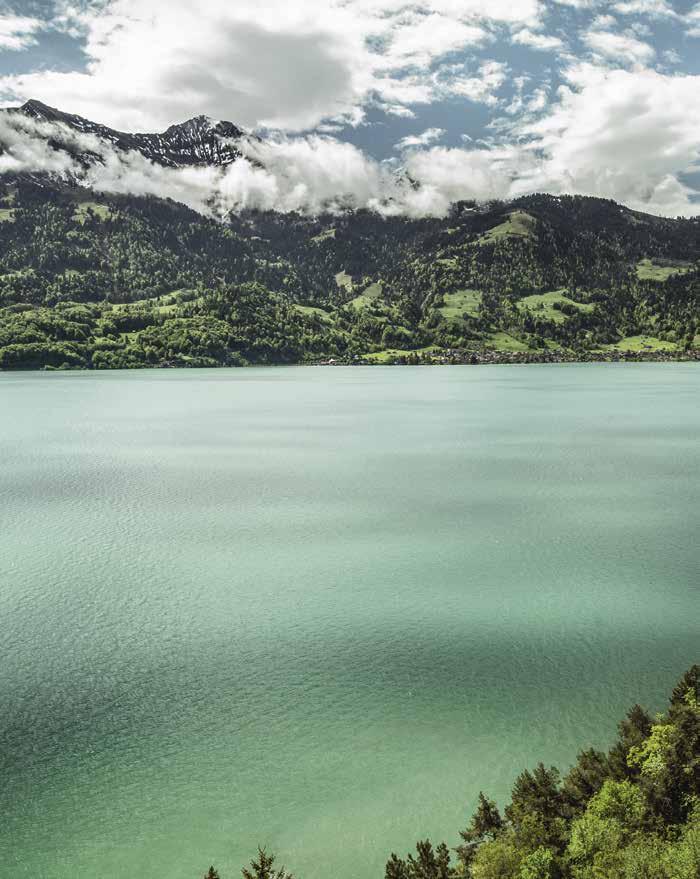

This stage takes you across the hilly Emmental and the UNESCO Biosphere Entlebuch, detours to the castles of Aargau and ends at Lake Lucerne.
The busy work in the Emmental show dairy begins early in the morning, when farmers from the surrounding villages deliver their fresh milk, to be made into the famous Emmental cheese in the old tradition with a lot of skill and knowledge. And how do the holes get in? The secret is revealed at the end of the tour.
It is these mystical moorlands that make the biosphere reserve – the first in Switzerland –unique. Affectionately known as Lucerne’s Wild West, it is a paradise not only for nature lovers but also for gourmets: as well as buffalo mozzarella and meringues, there are delicious Kambly biscuits.
Sempach was once a trading and fishing town, founded by the Habsburgs to guard the lake shore and the then Gotthard route. Its old town and location on the shores of Lake Sempach are still enchanting today.
It is wholly understandable that the Lords of Hallwyl – a Swiss noble family – settled on the shores of the lake that is named after them. They built Hallwyl moated castle, one of the most important in Switzerland, on two islands in the Aabach.


More tips for Lucerne on p. 11
The scenery around Lake Lucerne is rightly considered to be among the most impressive in Switzerland. As the car ferry chugs across the lake from Gersau to Beckenried, it offers truly special views of the fjordlike landscape. Steep cliffs and green hills plunge into the blue lake.

If you’ve ever wanted to know how James Bond might have felt in “Moonraker”, duelling dicily with the villain Jaws on the cable car roof high above Rio de Janeiro, you should sample this open-top ride. Take the cable car to the Stanserhorn summit in either the glazed lower level or the open upper deck.
BERN
Wasserschloss Wyher Rigi


Luzern
Autofähre Vierwaldstättersee

All connections: Grand Tour App
Available here: App Store | Google Play
Depending on how much time you have, the app compiles individual daily routes from the 8 stages.
Select the stages based on speed: slow with as many highlights as possible, or faster with more fun at the wheel.
Take a selfie at the most beautiful spots and add it to the virtual photo album.
A dense network of charging stations powers the Grand Tour, guaranteeing over 1,600km of relaxing and eco-friendly driving. MySwitzerland.com/e-grandtour
1
Map with all charging stations
2 Hotels with charging stations
A short three-day trip from Bern’s old town through the small towns of the Swiss Plateau to the metropolis of Zurich.
Four relaxing days on the road, taking in the most beautiful wellness oases from Lake Geneva to the Bernese Oberland.
Culinary
1955 Motorway
Switzerland’s first motorway was opened in Lucerne in 1955.
120 Passes
120 road passes guarantee twisty driving fun.
1,200 Road tunnels
1,200 tunnels pass through Swiss mountains and hills.
In the canton of Graubünden, cars were not allowed on the roads for 25 years from 1900 to 1925.
f 9 ê
3 Hire e-cars Picnic
Double your enjoyment with the Grand Tour Snack Box.
» Never go hungry
» Regional specialities
» The ideal souvenir
MySwitzerland.com/snackbox
A journey of culinary highlights in St. Moritz, Zermatt and Mediterranean Lugano.
Four unique days engaging with nature in Eastern Switzerland: gorges, magical mountains and red deer. Grand Tour Deluxe Five deluxe nights in five different locations.
Information and booking: MySwitzerland.com/ grandtouroffers
If you’d prefer a physical map to the Grand Tour app, get the Hallwag atlas.
Travel guide
Get the Grand Tour of Switzerland in book form including a 1:500,000 scale map, from bookshops or at MySwitzerland.com/ grandtourguide
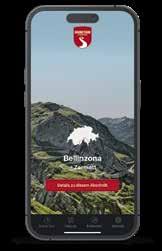
High peaks and vast landscapes: the photo spots reveal the most beautiful views along the Grand Tour.
On the road in a rental car from Europcar
Whether a small car, family van or SUV: Europcar has a sustainable electric model in its fleet for every requirement. Rental cars are available at the Zurich and Geneva airports or at various train stations throughout Switzerland.
Conquer the streets on a Harley-Davidson
The Grand Tour is long and requires the right means of transport: the collection of Grand American Touring bikes from Harley-Davidson was developed especially for long distances.
Perfectly equipped for leisurely riding
» Saddlebags
» Assistance system
» Boom!™ Box GTS infotainment system
» Cruise control system
» Daymaker LED headlamp
Rental stations
Aesch
Au
Mönchaltdorf
E-SUV with plenty of space and range
The Skoda Enyaq Sportline aims high: it offers plenty of space and an all-wheel drive to get safely up the mountains.
Discover offers from Europcar
» All vehicles are new
» No hidden costs
» 24-hour roadside assistance
» Flight delayed? Europcar will wait for you
3 Traffic rules
Speed limits
It is time for a new way of travelling, and we Swiss are considered pioneers in sustainable travel. A few tips on how you can make your trip more sustainable:
120km/h on motorways, 80km/h on main roads outside urban areas, 50km/h in urban areas.
Alcohol
The legal blood-alcohol limit in Switzerland is 0.5 per mill.
Age
Cortaillod
Morges
Les Acacias
Granges
Each location may not have all models available.
Hünenberg
Maienfeld
Pambio-Noranco
Overview of all models:
“Drive your line” with Hertz
First-hand tips for unforgettable outings and short trips: that’s Hertz’s “Drive your line”.
MySwitzerland.com/ swisstainable
A Grand Tour playlist
Street music with a difference:
Most car hire firms rent vehicles to drivers from the age of 21.
2 Vignette
The motorway sticker (vignette) costs 40 francs, which covers the annual toll charges for the motorway network. The vignette is included with rental cars.
On the platform, various Swiss celebrities reveal their favourite destinations and share interesting anecdotes from their lives.
Be inspired by Swiss celebrities –and Hertz customers – and put together your own route.
Also on Sundays
SWISS HISTORIC HOTELS
MySwitzerland.com/historic
TYPICALLY SWISS HOTELS
MySwitzerland.com/typically
SPA & VITALITY HOTELS
MySwitzerland.com/spa
INSPIRING MEETING HOTELS
MySwitzerland.com/inspiration
SWISS FAMILY HOTELS & LODGINGS
MySwitzerland.com/familyhotels
You’ll find the perfect room for every taste and preference. More hotels and accommodation options can be found here. MySwitzerland.com/hotels
BOUTIQUE & DESIGN HOTELS
MySwitzerland.com/boutiquedesign
SWISS BIKE HOTELS
MySwitzerland.com/bikehotels
SNOW SPORTS HOTELS
MySwitzerland.com/snowsportshotels
LUXURY HOTELS & HOMES
MySwitzerland.com/luxury
ACCOMMODATION CATEGORIES SWISS HISTORIC HOTELS TYPICALLY SWISS HOTELS
















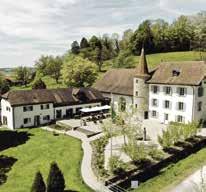

ACCOMMODATION CATEGORIES SWISS HISTORIC HOTELS TYPICALLY SWISS HOTELS
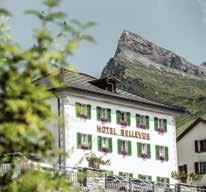








HOTEL
GRAND
RADISSON BLU HOTEL REUSSEN ANDERMATT

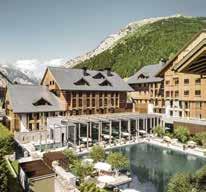

THE CHEDI ANDERMATT ANDERMATT
SEEHOTEL WALDSTÄTTERHOF BRUNNEN


FLÜHLI HOTEL KURHAUS FLÜHLI
PILATUS KULM HOTELS KRIENS


HOTEL SCHWEIZERHOF LUZERN LUCERNE

CULINARIUM ALPINUM STANS
HOTEL VITZNAUERHOF VITZNAU
HOTEL BÄREN GONTEN GONTEN


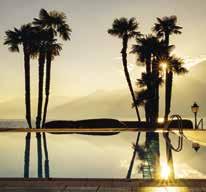



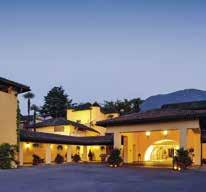




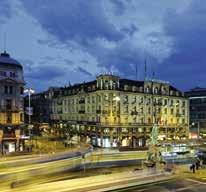







Publisher Switzerland Tourism: Morgartenstrasse 5a, 8004 Zurich, Switzerland
Concept | Text | Editing
Transhelvetica, Passaport AG:
Jon & Pia Bollmann | Stephanie Elmer
Michèle Fröhlich | Laura Meier
Layout | Illustration: Anna Sarcletti passaport.ch transhelvetica.ch

Switzerland Tourism:
Adrian Müller | Christine Peter
Claudia Brugger | Daniela Wüschner
Felix Pal | Franziska Brunold | Giulia Rossi
Jan Karlen | Janina Naef | Jasmin Wyrsch
Luca Giordani | Mona Zäch | Nina Vanoli
Oliver Nyffeler | Sarah Haslebacher
Susanne Berther MySwitzerland.com
Images
Pages 8/9, © Jonathan Ducrest
Page 18, © Scott Wilson (Alamy Stock Photo)
Page 29, © Robert Haasmann (imageBROKER)
Page 30, © Silvano Zeiter
Page 41, © Carlos Lindner (Unsplash)
All other images provided by Switzerland Tourism and partners
Illustration
Silvan Borer silvanborer.com
Katrin von Niederhäusern, Janine Wiget katrin.cool janinewiget.com (page 66)
Copyright Switzerland Tourism, all right reserved.
Print run 469,000
Languages de | fr | it | en | es
Printer Vogt-Schild Druck AG vsdruck.ch
Strategic premium partners
Recommended by Switzerland Tourism:
Strategic partners
With SWISS, Switzerland begins on board. As soon as guests enter the aircraft, they can experience the values for which Switzerland is well known. With authentic, regional products and Swiss hospitality, the time will quite literally fly by. Welcome on board, welcome to Switzerland! swiss.com
Popular Swiss cheeses such as Gruyère, Tête de Moine and Appenzeller are served on board. Visit the show dairies of Switzerland to learn more about the cheese varieties and how they are made.
The SWISS mini chocolate bars are a token of appreciation for passengers and a delicious sample of one of the things for which Switzerland is known worldwide.
The exclusive water flows from a rocky spring in the Glarus Sernftal valley that is part of a UNESCO World Heritage site. The views of the Tschingelhörner chain from Elm are stunning, while those keen to venture into the depths of the mountain can do so at the slate factory.
Enjoy shopping in the world’s highest boutique: SWISS Inflight Shopping offers a selection inspired by its Swiss homeland and culture, including the Breitling Navitimer SWISS Limited Edition. swiss.com/dutyfree
Responsible travel starts at the planning stage: when you choose your flight, SWISS offers the opportunity to make a simple contribution towards carbon-neutral flying. The following options are available:
SAF
Sustainable aviation fuel When booking your flight, offset the carbon emissions by purchasing sustainable aviation fuel.

Support myclimate
Make a valuable contribution by investing in climate protection projects run by the respected Swiss foundation myclimate. swiss.compensaid.com
With SWISS Air Rail, the boarding pass automatically doubles as a train ticket, allowing passengers to enjoy a comfortable journey to their destination and flexible ticket conditions. From Zurich Airport and straight on to Lucerne, Interlaken, Bern, Geneva or another destination. Simply book a flight connection to the respective railway station. swiss.com/airrail
Guaranteed connection Train or flight delayed? You can easily transfer to a later connection.
Making travel planning easier
SWISS Air Rail combines your rail and air travel. This means you only need one booking with SWISS for the entire trip by train and plane.
Thanks to flexible ticket conditions, you can customise your trip.
Zurich Airport has great transport links, with connections to nine SWISS Air Rail destinations in Switzerland and to Munich Central Station.
1 million Mövenpick ice creams are eaten by SWISS passengers each year.
47,420kg of cheese is supplied to SWISS by Chäs Vreneli AG each year.
18 million
SWISS mini chocolates are handed out on SWISS flights each year.
Background reports and travel tips. SWISS MAGAZINE